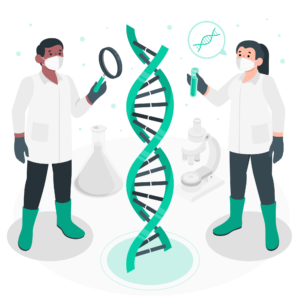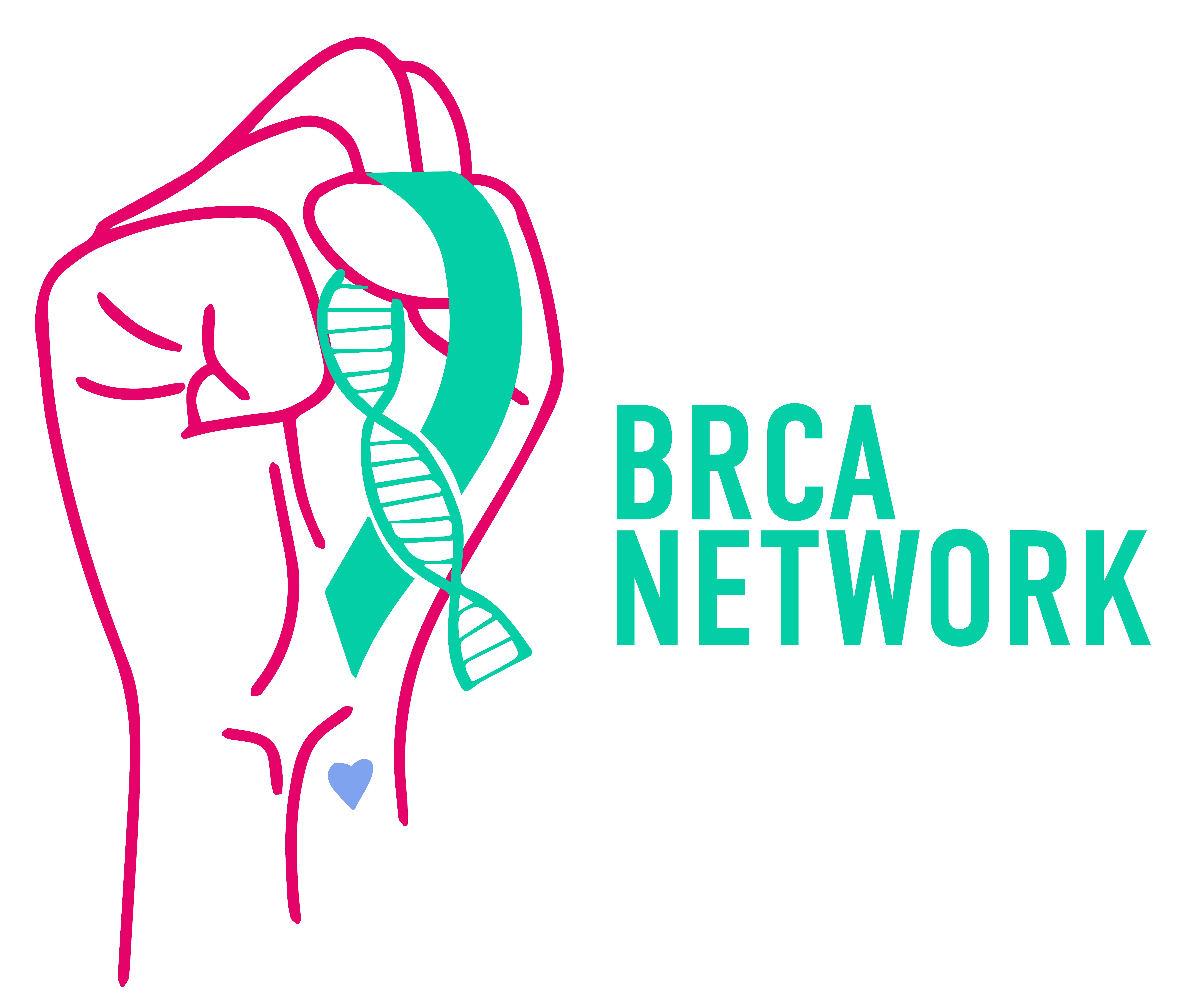Genetic mutations and cancer
Genes, genetic mutations and cancer predisposition
 Every cell in our body contains DNA, which is the code for all our hereditary characteristics. Our DNA comprises around 25,000 genes, each of which contains a unique set of instructions (the code) and has a very specific function. Some genes play the role of ‘gatekeepers’, ensuring the proper functioning of other genes and controlling, or inhibiting, cell growth. These gatekeeper genes are generally of the type referred to as tumour suppressor genes.
Every cell in our body contains DNA, which is the code for all our hereditary characteristics. Our DNA comprises around 25,000 genes, each of which contains a unique set of instructions (the code) and has a very specific function. Some genes play the role of ‘gatekeepers’, ensuring the proper functioning of other genes and controlling, or inhibiting, cell growth. These gatekeeper genes are generally of the type referred to as tumour suppressor genes.
The cells in our body divide to create new cells to help the body grow or to replace dead ones. At the same time, cell growth and division must be controlled. This is the task of the ‘gatekeepers’ genes. When there are errors or alterations in these genes, the body’s cells become abnormal and start to grow uncontrolled.
Any change in the sequence of a gene altering its normal function is called a genetic mutation. A mutation can be harmful, beneficial or have no effect. When a person carries a mutation in a “gatekeeper” gene from birth, he or she has a higher risk of developing cancer than the general population, leading to what is called a hereditary predisposition to cancer. Cancers in people who have an inherited mutation are called hereditary cancers. Hereditary mutations vary in their penetrance, which describes the probability of developing the type of cancer to which a genetic mutation predisposes. For example, if you have a mutation in the BRCA1/2 genes (high penetrance genes), the risk of developing cancer over a lifetime is very high.
A family history of cancer may also impact someone’s risk, even when an inherited mutation is not present. Cancer may be considered familial when two or more relatives are diagnosed with cancer, especially the same type of cancer.
Hereditary cancers represent 5-15% of all cancers. They are characterised by an early onset, and appear in several people from the same family branch. One of the most common hereditary cancer syndromes is hereditary breast and ovarian cancer syndrome, often associated with a mutation in the BRCA1 and BRCA2 genes (as well as other genes, see below).
In the case of a hereditary predisposition, it is important to be able to identify it as early as possible through genetic testing, in order to be able to take action to limit the risk.
How are mutations inherited?
Cancer always begins with a gene mutation. In hereditary cancers, mutations in certain genes are present from birth. These are called hereditary or germline mutations as they are inherited from one of your parents. In non-hereditary cancers (called sporadic cancers), mutations occur throughout life. We then speak of acquired mutations. Mutations can occur for various reasons, including exposure to carcinogenic substances, ageing, or exposure to environmental toxins, among others.
People can pass an inherited gene mutation both to their sons and daughters through their sperm or eggs. Each child of a genetic carrier, regardless of sex, has a 50% chance of inheriting the mutated gene from the parent (mother or father) who carries the mutation. Children with this mutation can then pass it on to their children in turn.
The BRCA gene mutation

Source: https://shorturl.at/huVWX
There are two genes that, if mutated, greatly increase an individual’s chance of developing certain cancers. These are known as the BRCA1 and BRCA2 (short for BReast CAncer) genes. Both are high penetrance genes. The ‘popularity’ of these genes took a big leap forward when actress Angelina Jolie publicly revealed that she carries a mutation in the BRCA1 gene. We have all the BRCA genes! These are tumour suppressor genes that prevent the development of certain cancers. When they work properly, they repair DNA, keep other genes healthy, and prevent cancerous changes in cells. However, if they mutate, they no longer work as effectively and certain types of cancer are more likely to develop.
When a mutation damages the BRCA genes, the risk of breast and ovarian cancer in women increases compared to the general population, while also increasing men’s risk of breast and prostate cancer. Recent studies show that mutations in these genes also increase both women and men’s risk of pancreatic cancer.
Other genetic mutations
Over the years, research to identify new genes that also contribute to an elevated risk of breast and ovarian cancer has been carried out and is still ongoing. Other genes that increase the risk of breast, ovarian and/or prostate cancer include:
- PALB2, RAD51C, RAD51D: associated risk of breast and ovarian cancer.
- CHECK2, ATM: associated risk of breast and prostate cancer.
- BARD1: associated risk of breast cancer.
- BRIP1: associated the risk of ovarian cancer.
- MLH1, MSH2, MSH6: associated risk of ovarian, endometrial and colorectal cancer.
- Breast cancer risk is also a component of mutations in the TP53 gene, associated with the rare Li-Fraumeni Syndrome (LFS). LFS is characterised by premenopausal breast cancer in combination with childhood sarcoma, brain tumours, leukaemia, and adrenocortical carcinoma.
While the TP53 and PALB2 genes are considered high penetrance genes, the others are considered moderate to low penetrance genes.
KEY FACTS - A RECAP

Mutations in “gatekeeper” genes cause a predisposition to certain cancers, including breast, ovarian, and prostate cancer. Both women and men can be affected.

Hereditary mutations are passed from parents to children. Both women and men can pass on the mutation.

If you inherit a genetic mutation, you do not inherit cancer, but an increased risk of developing cancer during your lifetime.

Knowing if you have a predisposition to cancer is important and can help you plan screening and prevention or identify targeted treatments for your cancer.
Do you think you may have a hereditary predisposition to cancer?
Visit the genetic testing page.
Useful resources:
- Vivre avec BRCA/Leven met BRCA – Les informations génétiques de base (FR) / Genetica: de basis (NL)
- Orphanet – Hereditary breast and/or ovarian cancer syndrome
- Orphanet – Li-Fraumeni syndrome
- ERN Genturis – Hereditary Breast and Ovarian Cancer Syndrome (HBOC) (EN/FR)
- ERN Genturis – Heritable TP53-related cancer syndrome (hTP53rc syndrome)/Li Fraumeni syndrome (LFS) (EN/FR)

 BRCA+ Network asbl
BRCA+ Network asbl